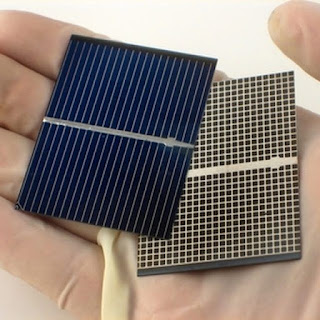Wednesday, February 19, 2025
DIY Solar Panel Using Cardboard and Basic Materials
Constructing a Low-Power Solar Panel using Cardboard and Readily Available Materials: A Practical Guide
This document details the construction of a rudimentary solar panel using readily available, inexpensive materials such as cardboard, aluminum foil, and readily available conductive materials. It is important to preface this guide by acknowledging that the resulting solar panel will generate a very low voltage and current, unsuitable for powering high-energy devices. This project is primarily intended for educational purposes, demonstrating the fundamental principles of photovoltaic energy conversion. The power output should not be expected to exceed that required for simple low-power applications, such as powering a small LED.
Project Overview and Safety Precautions
This project aims to illustrate the basic operation of a solar cell by constructing a simple device from readily available materials. While the materials are generally safe, certain precautions should be observed throughout the construction process.
Safety Considerations:
- Sharp Objects: Use caution when handling scissors, knives, or other sharp instruments used for cutting the cardboard and foil.
- Conductive Materials: Handle conductive materials such as copper tape or aluminum foil with care to avoid short circuits. Avoid touching exposed conductive surfaces while the panel is connected to a load.
- Eye Protection: Consider wearing safety glasses during the cutting and assembly process to protect against flying debris.
- Electrolyte Handling (Optional): If employing an electrolyte solution (see advanced techniques), follow all relevant safety guidelines and wear appropriate personal protective equipment (PPE).
Materials and Tools Required
The following materials and tools are essential for constructing this basic solar panel:
Materials:
- Cardboard: A piece of sturdy cardboard, approximately 15cm x 15cm. Corrugated cardboard is acceptable; however, smoother surfaces may improve efficiency.
- Aluminum Foil: A sheet of aluminum foil, slightly larger than the cardboard. The quality of the foil impacts performance; thicker foil generally provides better results.
- Conductive Tape or Paint: Copper tape is preferable due to its excellent conductivity, but conductive paint can be used as an alternative. Ensure it is specifically designed for electrical applications.
- Electrolyte Solution (Optional): For enhanced performance (explained in advanced techniques), a suitable electrolyte solution, such as a paste of graphite powder and water, or a dilute solution of lemon juice, could be explored. Consult relevant resources for safer, more efficient solutions.
- LED or other Low-Power Load (Optional): A small LED or other low-power device can be used to test the output of the solar panel. A multimeter is recommended for voltage and current measurements.
Tools:
- Scissors or Utility Knife: For cutting the cardboard and foil.
- Ruler or Straight Edge: For accurate measurements and cutting.
- Pencil: For marking the cardboard.
- Tweezers (Optional): Useful for handling small components and applying conductive tape accurately.
- Multimeter (Optional): For measuring the voltage and current generated by the solar panel.
Construction Process: Step-by-Step Guide
The following steps describe the construction of a simple solar panel using the specified materials. This process focuses on a basic design; variations are possible based on available resources and desired complexity.
Step 1: Preparing the Cardboard Base
Cut the cardboard to the desired size (approximately 15cm x 15cm). Ensure the edges are clean and straight. This will serve as the substrate for the entire panel.
Step 2: Applying the Aluminum Foil
Carefully place the aluminum foil over the cardboard, ensuring complete coverage. Smooth out any wrinkles or air bubbles to ensure proper contact. Use scissors to trim any excess foil, leaving a small overlap around the edges of the cardboard.
Step 3: Creating the Conductive Paths
This is a crucial step. Use the conductive tape or paint to create two separate conductive paths on the aluminum foil. These paths will be the positive and negative terminals of the solar panel. Leave a significant gap between the two strips to avoid short circuits. Ensure good adhesion of the conductive material to the aluminum foil for optimal performance.
Step 4: Connecting to a Load (Optional)
If an LED or other low-power device is available, connect the positive and negative leads to the respective conductive paths. Observe the LED; a dimly lit LED indicates successful power generation, albeit with limited output. A multimeter can be used to measure the voltage and current produced. Expect very low readings, typically in millivolts and microamps.
Advanced Techniques and Optimizations
While the above process outlines a basic solar panel, certain modifications can enhance performance, though potentially increasing complexity.
Utilizing an Electrolyte Solution
The introduction of an electrolyte solution between the aluminum foil and the cardboard can increase the panel's efficiency, but requires careful consideration of safety and material compatibility. A paste of graphite powder and water, or a diluted citrus juice, could be explored. Thorough research is necessary to select an appropriate and safe electrolyte. The electrolyte should be applied evenly between the aluminum foil and the cardboard.
Utilizing Multiple Cells
The output of the single-cell panel is extremely limited. By creating multiple smaller cells and connecting them in series or parallel, the voltage or current output can be increased. This requires careful planning of the conductive pathways and connections between cells.
Surface Treatment of Aluminum Foil
Specific chemical treatments or surface modifications to the aluminum foil may enhance its light-absorbing properties and improve its performance as a photovoltaic material. However, these methods may require specialized equipment and chemicals.
Conclusion
This guide presents a basic approach to constructing a low-power solar panel using readily available materials. The generated power is extremely limited, emphasizing the simplified nature of the design. While the project may not produce commercially viable electricity, it serves as a valuable educational tool, demonstrating the fundamental principles behind photovoltaic energy conversion. Further experimentation with materials and techniques can improve performance, but always prioritize safety and responsible handling of materials.

